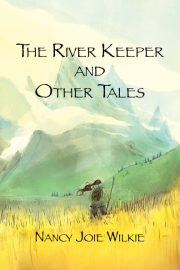Writing Eyebrows: How to Orchestrate Emotion in Your Story
by Hunter Liguore
Creating new characters takes a careful eye. When an idea comes, we might rely on familiar images to fashion characters that aren’t truly our own, but rather influenced through media images or by people we’ve encountered or known well. What is often missed in the early drafting of characters is the up-close observation necessary to fully render their emotional expression, which in turn accentuates their uniqueness. One way we can develop our characters is to consider the individuality and expression of a character’s eyebrows.
Eyebrows can be an important window into a character’s interior world. When we scrutinize with words the detail of movement and expression individual to each person, we create an orchestration, a living symphony of movement and energy, indicative of a living world. To do this takes attention, rumination, and concentrated focus on the people we’re writing.
You may not realize that the eyebrows move in concert with the forehead, and the forehead with the hair, and that they reflect the person’s state of being. Up close, eyebrows are but a few strands of hair, but to an observer—and certainly to the writer—they offer a means of gauging a person’s emotional state, and a new avenue to consider the different goings-on of their mind. It’s a process of discernment, whether made consciously or not. When we’re engaged in conversation or passing someone, we’re reading their face, and reacting in kind to what we see.
For many, the eyebrows rest in a neutral state, perhaps confident or positive, and then as they’re moved, express a variety of emotions. As the realism painter Robert Henri (1865–1929) explained it:
“There are those, therefore, who carry in repose an expression of sadness, boredom, surprise, dignity, and some accentuate the force or direction in the action of looking.”(1)
Each of these varied states is being interpreted by the viewer, who then reacts in kind. We can apply this information to our writing to create a more valid picture of what is perceived and experienced by our characters.
There are many more expressions that the eyebrows convey than mentioned above, and yet writers often don’t take the time to investigate them. For instance, someone with facial nerve damage will have no movement at all. Sometimes eyebrows are plucked fully. A baby’s eyebrow movements will differ in interpretation from that of an older person. Ultimately, the more nuanced the author is in observing the eyebrows, the more fluid the person will be on the page, for no pair of eyebrows are alike.
Our awareness of the subtleties of a character’s expression isn’t to say we should edit our work to include constant movement of the eyebrows. But it does call into question our ability to notice the most minute detail, and that is our job! When we go back and investigate a character’s eyebrow movements, we begin to find out more about the way they think and feel and can write about it. In turn, we can actively portray these expressions to the reader in a more congruent way than may have been possible prior to our scrutiny.
Some questions to consider:
- What emotion are the eyebrows showing in this scene, and why?
- What opportunities in your story exist for the character’s expression to change?
- Did you offer an emotional resolve?
In a way, we can craft eyebrows in the same way we do plot:
Beginning/natural state → conflicted state → resolved state → changed/new evolved state
Part of the work of observing a character’s eyebrows in close detail is to check our work, to see if we’re consistent and able to layer their emotional state. To an artist, as Henri explained, “The eyebrow is a living thing.” To consider it in your writing is to do just that: offer another layer to what makes the character as human and alive as possible. You can then continue to layer expressions by adding the eyelashes and eyes with equal variation.
To get started with the eyebrows, observe them wherever you go for a week. It might be somewhat humorous, at first, to include your friends, asking, Can I observe your eyebrows? It’s good that we meet the work with curiosity and lightness, or we might get into the dichotomy of right/wrong, when the goal is simply layering detail to our greatest effort, to leave nothing left in our discovery of our characters.
By observing eyebrows, we will come to the work anew as our ability to transpose and express emotions intensifies. With practice, vividly reproducing a cohesive orchestration—a concert of words that adds up to the sum of an integrated person—makes for characters that could very well walk off the page.
Notes:
(1) Henri, Robert. The Art Spirit. Basic Books: New York, 2021. Pg. 11.
 Hunter Liguore is the award-winning author of Whole World Inside Nan’s Soup (Paterson Prize for Books for Young Readers Winner). She is a professor of writing at Lesley University. A banned book collector, she can often be found roaming old ruins, hillsides, and cemeteries burying books for future generations. www.hunterliguore.org
Hunter Liguore is the award-winning author of Whole World Inside Nan’s Soup (Paterson Prize for Books for Young Readers Winner). She is a professor of writing at Lesley University. A banned book collector, she can often be found roaming old ruins, hillsides, and cemeteries burying books for future generations. www.hunterliguore.org


